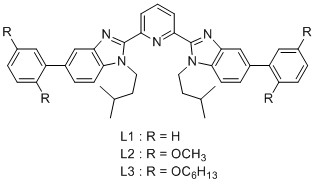Replacing activity coefficients with explicit changes in solvent chemical potentials for unravelling intermolecular association processes
Thermodynamic laws treat solvent activity as a constant when binding equilibria occur in diluted solutions and any deviations are assumed to arise from non-ideal behaviors of the reactants and products. However a better modeling of the solvent molecules involved in solvation reactions may be beneficial to the comprehension of intermolecular association processes. In this context, Castellano and Eggers1 developed a novel approach, in which solvent molecules were introduced as chemical partners. In the chemical potential framework, the explicit consideration of solvent contribution to the complexation equilibria results in significant deviations of the law of mass action. Stability constants, which characterize the formation of coordination complexes, are therefore significantly altered. Bearing all these elements in mind, we established theoretical and experimental methods, which aim at separately evaluating solvent effects and “pure” binding affinity accompanying the reaction of neutral tridentate ligands (L1, L2 and L3) with neutral saturated trivalent lanthanide carriers [Ln(hfac)3(diglyme)]. Changes in ligand lipophilicities and in metallic sizes are investigated for decrypting robust trends in binding selectivity.2

Figure 1: Chemical structures of tridentate ligands L1, L2, L3
[1] Brian M. Castellano and Daryl K. Eggers, J. Phys. Chem. B., 2013, 117, 8180.
[2] Lucille Babel, Thi Nhu Y Hoang, Homayoun Nozary, Jasmina Salamanca, Laure Guénée and Claude Piguet, Inorg. Chem., 2013, 53, 3568.